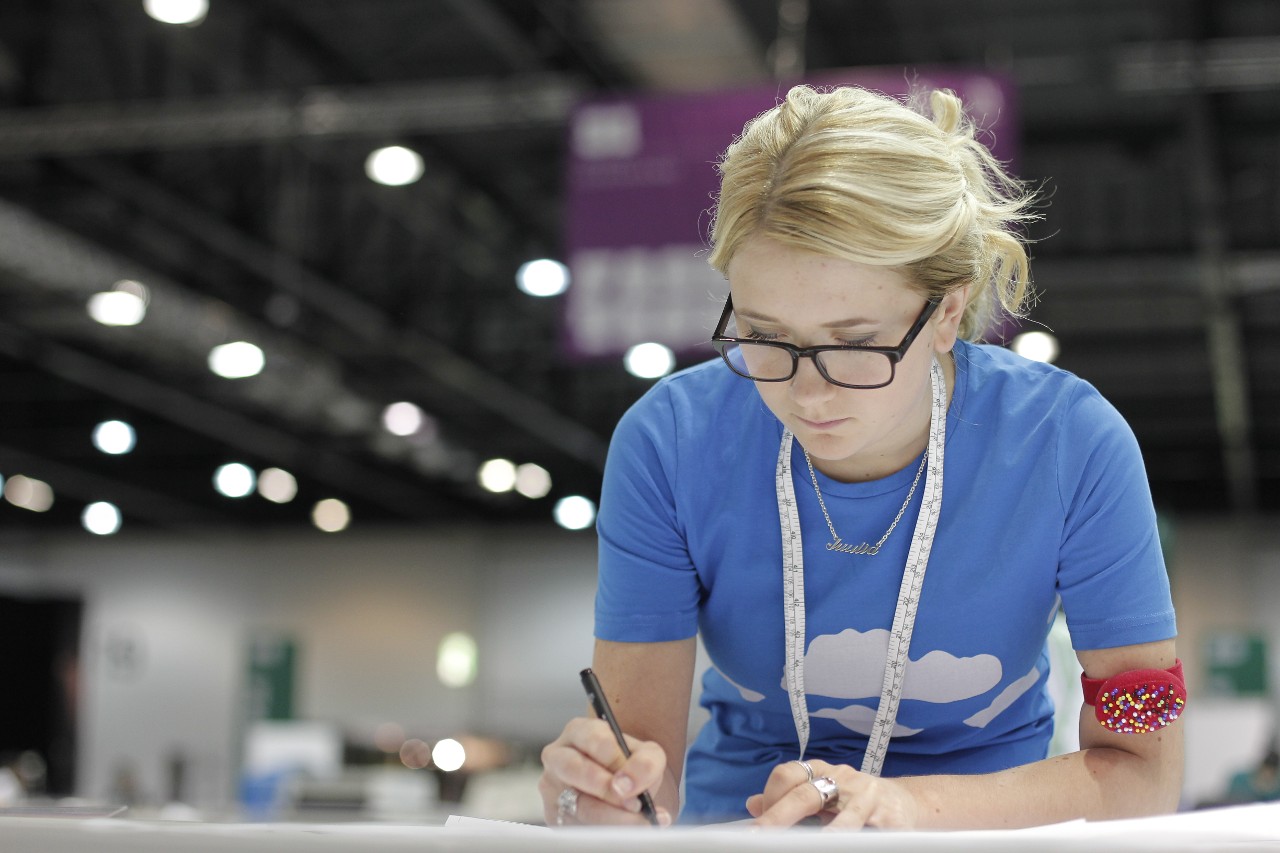Fashion Technology 31
The Fashion Technology practitioner creates garments. The technical skills involved include design, pattern construction, cutting and garment manufacture.
The practitioner may work in one of several sectors but often they are self-employed and work on commissioned projects or in the retail manufacturing sector or in sampling garments for production. As such they need to have business acumen and strong interpersonal skills when dealing with clients. Excellent customer care and selling skills are crucial. As some work is often commissioned for important events, the practitioner must understand the needs of the client and be able to offer appropriate expert advice whilst interpreting the vision for the finished project. Customer briefs must be clearly understood and followed accurately.
Fabrics are often expensive, delicate and easily damaged or handled incorrectly. Given this, the practitioner must be respectful of the raw materials with which they work and apply extensive knowledge of effective sourcing, purchasing, handling and storage of all materials. Sustainability, ethics and budgets are all serious considerations when sourcing materials and selecting sub-contractors.
The design of a garment requires innovation, creativity and artistic and design talents that incorporate aesthetics and practicalities. The practitioner must apply the rules and theory of composition including design elements and principles as well as technique. He or she is often creative and artistic, with a good eye for design and the ability to create pleasing and functional garments, suitable for their purpose. In addition, a thorough knowledge and understanding of specialist equipment and its use is essential. Another requirement is a high level of technical knowledge in patternmaking and construction techniques. Different fabrics will react in various ways to the manufacturing process and these characteristics must be considered throughout the preparation and production process.
There is a wide range of practice in the fashion sector. Some practitioners produce small ranges for retail outlets or high class fashion houses or prepare bespoke garments ordered by individual clients. At the other end of the professional spectrum, the practitioner may work in an industrial setting, producing prototypes for mass production. Practice also varies across the world. The fashion industry is truly global: for example, a garment may be designed and prototyped in one country and sub-contracted for manufacture in another.
Wherever employed, it is essential that the practitioner is aware of current and emerging fashions and trends in the fashion industry. Equally important is an awareness of new developments in fabrics and textiles as well as machinery and equipment. Significant damage can be done to a business and its reputation if fashion trends are misread.
Required skills
- Knowledge of fashion design, creativity and imagination;
- Confident with various techniques for pattern making and cutting for fashion outfits;
- Capable to use various industrial sewing machines and equipment efficiently to make fashion outfits;
- Capable to perform Haute couture hand-sewn techniques to finish small parts of the fashion outfits.
Career info
The Fashion Technology practitioner designs and creates garments based on an understanding of aesthetics and a strong foundation of technical skills including design, pattern making, and use of specialized equipment for pattern making, cutting and manufacture. There is a wide range of practice - from high fashion or bespoke garments to prototyping for mass production and retail. In all cases, the most successful in this field will have a passion for and understanding of global fashion trends and consumer requirements.
Because fabrics are often expensive, delicate and can be easily damaged or handled incorrectly, the practitioner must be respectful of the properties of raw materials, including knowledge of the ethics and sustainability around materials sourcing, purchasing, handling, and storage. Budgets are all serious considerations in this field.
The design of a garment requires innovation, creativity, and artistic and design talents that incorporate both aesthetics and practicalities. The practitioner applies the theory and principles of design and competition as well as detailed and precise technique.
Understanding a client’s passion and expectation for a distinctive “look”, as well as assessing the attributes of a particular client is critical. The client will have high expectations of the designer; will place a high degree of trust in them; and will count on the “eye” and skill of the practitioner to create something uniquely, individually beautiful.
At the Competition
The Test Project is made of three modules:
- In the first module, the Competitors will receive a set of patterns for making a pair of classic ladies' pants and the Competitors have to prepare the pattern, cut the fabric, sew and finish the pair of pants.
- For the second module, the Competitors will receive a selection of different fabrics and accessories to design and to make a ladies' jacket or an overcoat following the theme "Military Chic".
- During the third module, the Competitors will receive a "Mystery Box" which contains one piece of surprise garment and a selection of surprise material and accessories. With these mystery materials, the Competitors have to design and create a ladies' blouse to be worn under the jacket or overcoat made in the second module.
- Towards the end of the Competition, each Competitor designed and created a set of trendy ladies' outfits according the theme "Military Chic".

